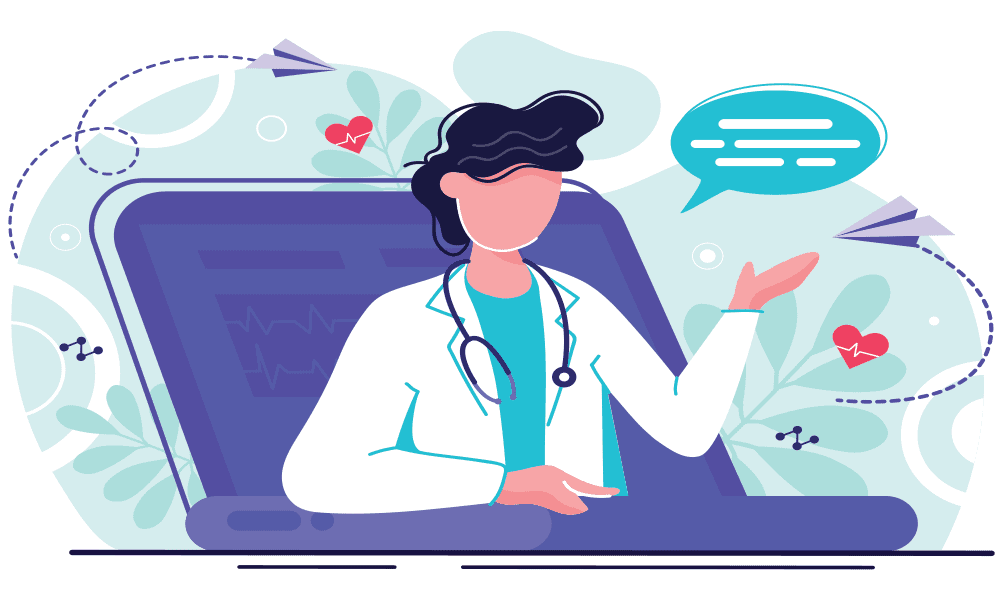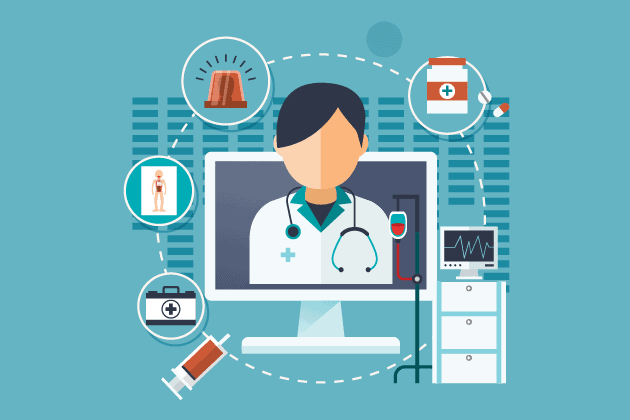Here is some advice for those who want to start a Telehealth service. This tutorial will cover the details about telehealth service, its benefits, and the tips to run a telehealth service.
What is a Telehealth Service
As the world undergoes rapid transformation and consumer priorities vary, the new linked healthcare business offers a reasonable answer. Maximum gains from remote care delivery services are cultivated by both patients and healthcare professionals. From real-time remote patient monitoring to dependable clinical data storage and asset management, telemedicine technologies may improve several facets of healthcare delivery.
On a worldwide scale, this improves the standard of medical treatment, which in turn benefits patients by enhancing their care and allowing them to address immediate health issues more quickly. From a commercial perspective, this may be an effective avenue for increasing access to healthcare, decreasing healthcare expenditures and making better use of available resources.
- READ MORE – Top 9 Healthy Sleep Android Apps for Students
- 4 Useful Tips for You to Keep Your Mac Clean and Healthy
Patient Benefits with Telehealth service

Patients no longer have to waste time going to see their doctors or physicians.
Improved Health and Wellness Results
Patients may save money and time by avoiding unnecessary hospital readmissions. A doctor may rapidly contact a patient using a video call interface in a telemedicine app to diagnose and treat common symptoms like a cold or fever.
Read more: telemedicine software development
Comprehensive Support From Every Angle
You may obtain the care you need for any illness without traveling far from home. With the use of a telemedicine app’s search and filter functions, patients may make an appointment with a doctor or specialist from almost any location.
Advantages for Doctors with Telehealth service

A telemedicine app may gather this information via automated chat and transmit it to the doctor before a consultation, saving valuable time that would otherwise be spent asking the patient about their medical history, current ailments, and symptoms.
Take Care of a Larger Volume of Patients
The software centralizes all patient information (electronic medical records/health records), allowing doctors to see more patients according to their schedules. Since it is an online consultation, you won’t have to worry about your doctor having to commute in to see you.
The app will keep track of each patient’s medical history, including their treatment, medications, and interactions, and will schedule follow-up appointments for you automatically.
- READ MORE – 10 New Trends in Insurance Software Startups
- How WritingAPaper helps students to overcome college challenges
Advice for Those Constructing a Telehealth Service

It is important to consider the needs of the end users while developing a telemedicine system. The healthcare business has certain common problems in addition to the universal difficulty of maintaining both parties in an online marketplace.
1. Compliance
Payment processing and other healthcare-related services offered online must adhere to local laws. The rules vary from one nation to the next. Comparatively, HIPAA is the law in the United States, whereas PIPEDA is the law in Canada.
Both the Data Protection Directive (95/46) of the European Commission and the e-Privacy Directive (2002/58/EC) are enforced across the European Union. Healthcare software developers risk legal action and financial penalties if their product is not compliant with applicable laws. Prison term may be imposed for such infractions.
2. Security
Providing a safe environment is essential in order to gain the confidence of both patients and medical professionals. It is crucial that your healthcare website security software follows all of the best protocols.
Technologies currently in use for safety:
- Authentication using many factors
- Methods of Identifying Individuals Based on Their Biometric Traits
- Encryption of Data
- Authentication with two separate steps
- Powers down your computer automatically.
3. Trust
Trust from patients depends on more than just security measures. Users put a lot of faith in doctors because of their knowledge and experience.
Gaining users’ confidence in a telehealth platform is possible through:
- Displaying the physicians’ credentials, such as their years of experience, level of skill, and location of employment.
- That includes comments and evaluations from actual patients.
4. Broadening Its Horizons Globally
It would be challenging to make a global telehealth internet marketplace work owing to the wide variety of legal limitations in different countries. In contrast, it offers many possibilities for developing a stellar specialty and regional platform.
Conclusion
Although it’s still in its infancy, telemedicine and its clinical applications have the potential to revolutionize healthcare systems throughout the globe. Startups in the healthcare industry may capitalize on the expanding telehealth market by developing a successful product or service based on a reliable telehealth infrastructure.
I hope this tutorial helped you to know about the 4 Tips for Those constructing Telehealth Services. If you want to say anything, let us know through the comment sections. If you like this article, please share it and follow WhatVwant on Facebook, Twitter, and YouTube for more Technical tips.
- READ MORE – 4 Productivity Tips Every Student Should Adopt
- TheWiSpy Review: Track Social Media Conversations Remotely
4 Tips for Those constructing Telehealth Services – FAQs
What technologies are needed for telehealth?
Telehealth is the use of digital information and communication technologies to access health care services remotely and manage your health care. Technologies can include computers and mobile devices, such as tablets and smartphones.
What are the 4 types of telehealth?
Today, telehealth encompasses four distinct applications. These are commonly known as live video, store-and-forward, remote patient monitoring, and mobile health.
What might be the challenges to implementing a telehealth program?
Poor internet connection and lack of universal access to technology were among the technology barrier.
What is a telehealth protocol?
Telehealth is the use of information and telecommunication technology to provide health care across time and/or distance.
What is the main purpose of Telehealth?
Telehealth improves their health care by improving access to timely services. Telehealth consultations are not only convenient, but they also ensure the safety of others by reducing the spread of illness.
